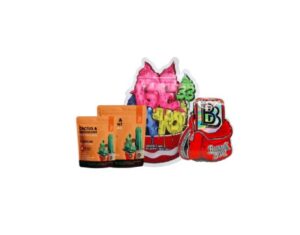What Is Spot Sampling and Why It’s Essential for Reliable Test Results
When it comes to workplace safety, environmental monitoring, or industrial hygiene, accuracy in data collection can make or break an entire safety program. Whether testing air quality, water contaminants, or surface residues, the process used to gather samples directly affects how reliable the results are. One of the most practical and widely used methods in this process is spot sampling — a simple yet powerful technique that provides immediate insight into workplace or environmental conditions.
Understanding what spot sampling is and how it’s applied helps professionals ensure data integrity and informed decision-making. It also connects deeply with the principles of occupational safety training, where accurate observation and evidence-based action play vital roles.
Learn more about the IOSH Certificate Course and its global recognition.
What Is Spot Sampling?
Spot sampling refers to the process of collecting a single sample from a specific location at one point in time. Unlike composite sampling, which combines multiple samples to get an average result, spot sampling captures the conditions of a single moment — a “snapshot” of reality.
For example, an industrial hygienist might collect an air sample from a factory floor to check for dust or chemical concentration levels at that specific moment. Similarly, a food safety inspector may take a sample from a particular batch of ingredients to verify contamination levels before production begins.
Spot sampling is especially useful when:
- You need quick results to make immediate safety decisions.
- Conditions change rapidly and you want to capture a specific moment.
- The goal is to verify compliance with safety standards or exposure limits.
Why Spot Sampling Matters for Reliable Data
Every safety or quality-control decision relies on the integrity of data. Even the best analytical instruments can only deliver meaningful results if the samples they test truly represent the environment or material being studied.
1. Instant Insights for Safety Decisions
Spot sampling allows organizations to identify hazards or non-compliant conditions quickly. For instance, if a worker reports a strong odor near a ventilation system, an immediate air sample can confirm whether the exposure is within safe limits.
2. Detecting Irregular or Unexpected Events
Some incidents — like chemical leaks or sudden dust emissions — happen unpredictably. Spot sampling captures those irregular moments that long-term monitoring might miss.
3. Supporting Compliance with Safety Standards
In workplaces governed by safety regulations, such as OSHA standards, spot sampling helps demonstrate due diligence. By showing that sampling has been done promptly and properly, companies can prove compliance with occupational exposure limits and environmental health requirements.
4. Foundation for Continuous Improvement
Reliable spot sampling data empowers safety professionals to take corrective actions, improve ventilation, redesign workflows, or update PPE protocols — all based on solid evidence rather than assumptions.
Common Applications of Spot Sampling
Spot sampling is versatile and used across multiple industries and safety domains. Below are a few common applications:
- Air quality testing – Measuring dust, gases, or vapors at specific locations or during certain operations.
- Surface contamination checks – Identifying chemical or microbial residues on tools, machinery, or PPE.
- Water testing – Verifying contamination levels in cooling systems, drinking water, or wastewater.
- Food and pharmaceutical quality control – Ensuring compliance with hygiene and purity standards.
- Occupational exposure monitoring – Assessing if workers are exposed to harmful substances at a given moment.
Each of these applications emphasizes the same goal: accurate, trustworthy, and actionable data.
How to Perform Spot Sampling Effectively
Although the technique sounds straightforward, the accuracy of results depends on how well each step is performed.
1. Identify Sampling Objectives
Define what you want to measure — airborne dust, chemical vapors, or microbial presence. This determines the type of equipment, timing, and location for sampling.
2. Choose the Right Equipment
Select tools suitable for the environment and parameter. For instance:
- Air pumps and filters for particulate matter.
- Sorbent tubes for vapors or gases.
- Swabs or wipes for surface contamination.
3. Follow Standard Procedures
Use established protocols from OSHA, ISO, or EPA to ensure the process is scientifically valid and legally defensible.
4. Record Environmental Conditions
Document temperature, humidity, and operational status at the time of sampling. These variables can significantly affect results.
5. Preserve and Transport Samples Carefully
Improper handling can alter results. Use sealed containers and maintain chain-of-custody forms to preserve data integrity.
6. Analyze and Interpret Results Responsibly
Once the analysis is done, interpret the results in context — comparing them with exposure limits or regulatory thresholds to guide next steps.
The Bridge Between Spot Sampling and Professional Safety Training
Accurate sampling techniques are not only technical procedures; they’re integral to the broader discipline of workplace safety. Understanding methods like spot sampling helps professionals interpret data that directly impacts workers’ health, environmental safety, and regulatory compliance.
This connection brings us to a key professional development path: the IOSH Certificate Course.
How IOSH Training Reinforces Sampling and Safety Practices
The IOSH Certificate Course goes beyond theory. It teaches learners to recognize hazards, assess risks, and apply evidence-based strategies — many of which depend on reliable data from practices like spot sampling. Through hands-on exercises and practical learning, trainees develop the analytical mindset needed to evaluate safety information accurately and make informed decisions that protect people and organizations alike.
For instance, a safety officer trained under IOSH standards understands not just how to collect data, but why precision matters for long-term risk prevention. This real-world application of technical methods builds a foundation for smarter, safer, and more compliant workplaces.
Practical Benefits of Learning About Spot Sampling
- Improved accuracy in inspections – You can identify potential hazards quickly and effectively.
- Enhanced credibility – Proper data collection adds scientific validity to safety audits and reports.
- Career advancement – Employers value professionals who understand both safety regulations and technical data methods.
- Global recognition – Combining practical techniques with IOSH-based safety frameworks positions you for international opportunities.
Advancing Your Safety Career Through Training
If you’re inspired to connect technical safety practices with professional certification, click here to explore training options that combine science-based safety practices with internationally recognized standards. Learning how spot sampling fits within a larger safety system is one of the best steps toward becoming a knowledgeable and credible safety officer.
FAQs
1. What is the main purpose of spot sampling?
To capture a single, accurate measurement from a specific point in time, helping identify potential hazards or verify compliance with safety standards.
2. How does spot sampling differ from composite sampling?
Spot sampling provides data from one moment, while composite sampling blends multiple samples over time for an averaged result.
3. Is spot sampling suitable for all types of testing?
It’s ideal for short-term or immediate checks but less suitable for long-term exposure analysis, which requires time-weighted sampling.
4. Why is spot sampling important in workplace safety?
It helps detect unsafe conditions, chemical leaks, or contamination early, enabling timely corrective actions.
5. How does the IOSH Certificate Course relate to spot sampling?
The course teaches professionals to interpret safety data, including sampling results, to make informed decisions and ensure compliance.
Conclusion
Spot sampling might seem like a simple concept, but its impact on safety and quality assurance is immense. By capturing real-time conditions, it ensures that every decision made in the workplace is based on solid evidence, not assumptions.
Professionals who combine technical knowledge of sampling with structured safety education — such as the IOSH Certificate Course — stand out as reliable, skilled, and compliance-driven experts in their field.













